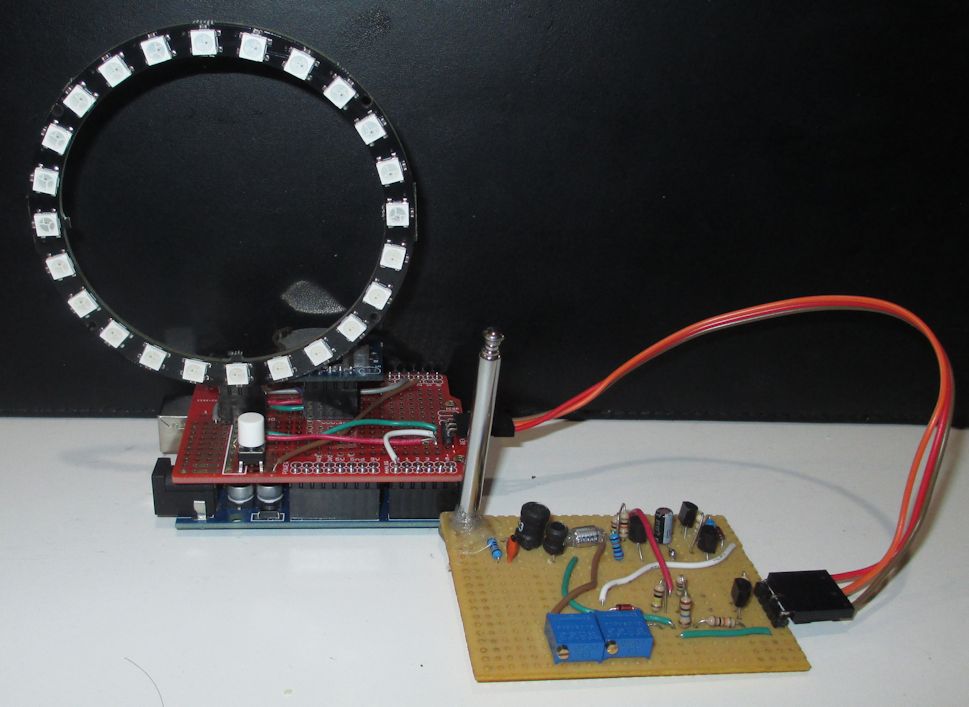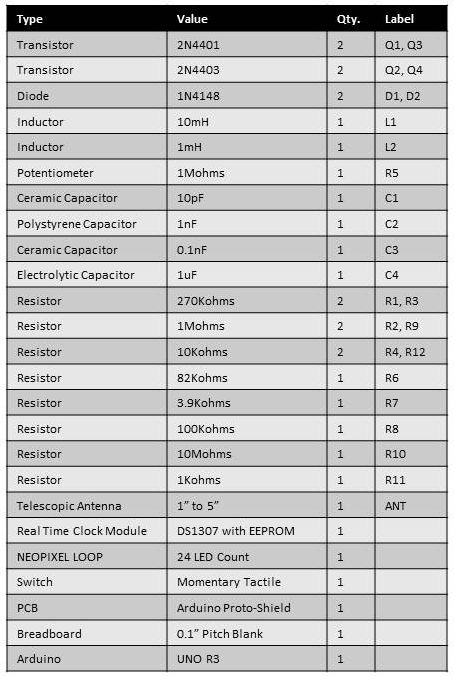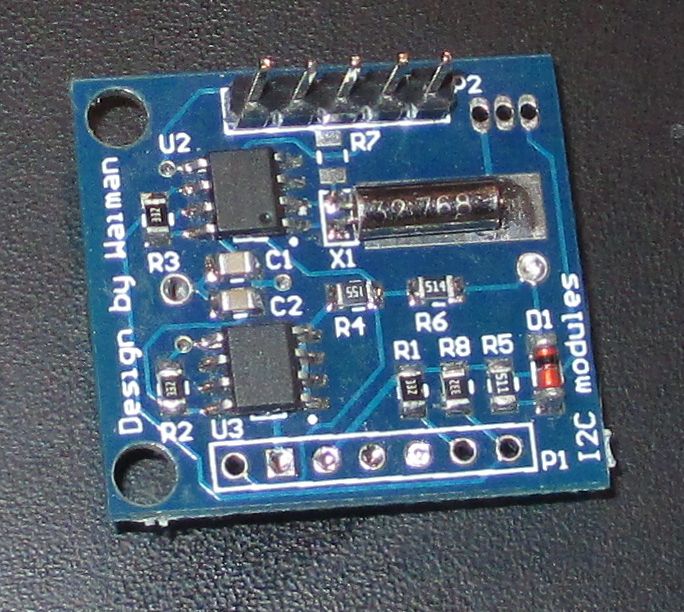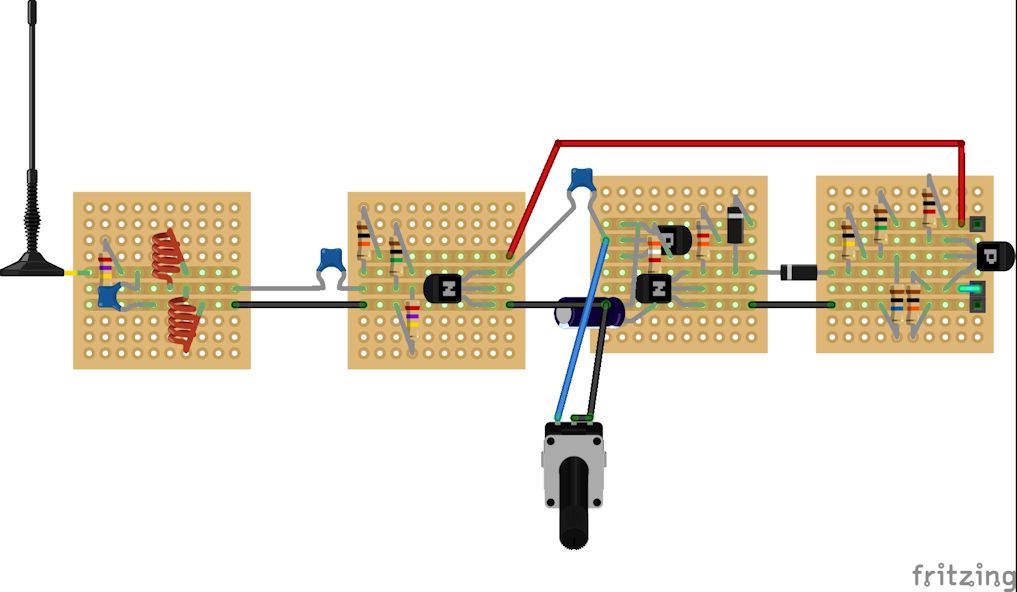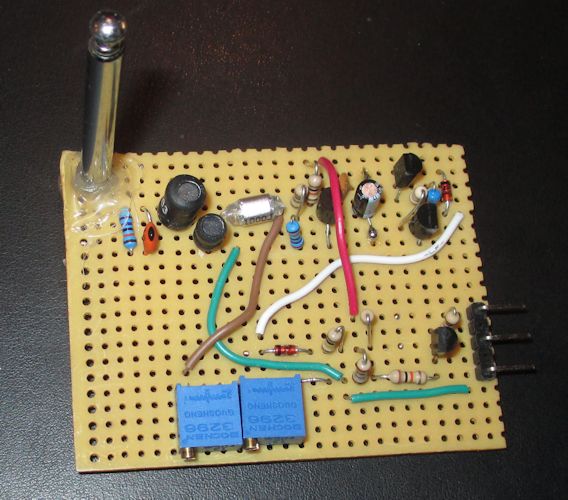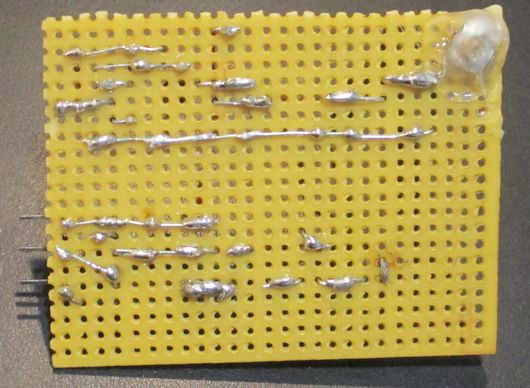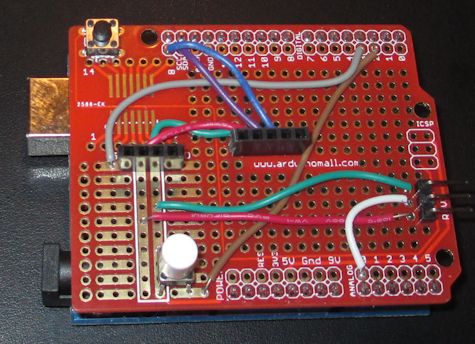Difference between revisions of "Lightning Detector"
| Line 1: | Line 1: | ||
[[File:JAC LD2 Portrait.jpg]] | [[File:JAC LD2 Portrait.jpg]] | ||
| − | With the readily available Lightning Detection Modules with multiple built in functions, | + | It is often in the pursuit of one project that leads one to build others. For example, let us say that the work of Victor Frankenstein was being prepared for duplication at the premier Louisville, KY hackerspace; LVL1. Instead of pursuing special wiring and fuse boxes from the landlord and LG&E, this LVL1 were to go old school and rely on the weapons of Zeus. Detecting the approaching wrath of the pagan abomination would be necessary to time the re-expression of Dr. Frankenstein's genius. With the readily available Lightning Detection Modules with multiple built in functions, commencing Victor's opus would be easy, if not too easy. And so, with an eye on sanctity and purity of the ultimate goal, they have decided to build a simple circuit attributed to Charles Wenzel and condemn the modern modules. The basic working principle is a 300kHz tank circuit with antenna. Lightning strikes induce a oscillation which is detected and amplified into a pulse. An arduino then measures the analog voltage of the generated pulse, displays a simple magnitude indicator and increments a counter. The device uses a loop of Neopixel LEDs to display the count. Added to the circuit is a RTC which also displays the time on the loop. |
| + | |||
=Bill of Materials= | =Bill of Materials= | ||
| Line 19: | Line 20: | ||
=Displaying Information= | =Displaying Information= | ||
| + | ==Recording Zeus's fury== | ||
| + | Upon detection of a strike, the loop lights up, engulfing the loop according to the magnitude of the signal created in fading BLUE. | ||
| + | ==Reading the Device== | ||
The white momentary tactile switch is used to display the time and number of lightning strikes. | The white momentary tactile switch is used to display the time and number of lightning strikes. | ||
| − | ==Telling Time== | + | ===Telling Time=== |
Time is displayed with RED and Green LED colors. There are 24 LEDs in the loop. The hour is displayed with three RED LEDs around the loop corresponding to a twelve hour clock face. The minute is mapped around the loop like a minute hand but approximated to 24 positions on the loop. | Time is displayed with RED and Green LED colors. There are 24 LEDs in the loop. The hour is displayed with three RED LEDs around the loop corresponding to a twelve hour clock face. The minute is mapped around the loop like a minute hand but approximated to 24 positions on the loop. | ||
| − | ==Lightning Strike Count== | + | ===Lightning Strike Count=== |
The top 13 LEDs represent the binary count of lightning strikes since power on, reset or 8192 strike reset. The LEDs are read from right to left in binary with RED for zero and Green for one. To ensure there is no confusion with the time display, a single WHITE LED is displayed at the bottom of the loop. | The top 13 LEDs represent the binary count of lightning strikes since power on, reset or 8192 strike reset. The LEDs are read from right to left in binary with RED for zero and Green for one. To ensure there is no confusion with the time display, a single WHITE LED is displayed at the bottom of the loop. | ||
=Video= | =Video= | ||
Revision as of 10:27, 26 August 2021
It is often in the pursuit of one project that leads one to build others. For example, let us say that the work of Victor Frankenstein was being prepared for duplication at the premier Louisville, KY hackerspace; LVL1. Instead of pursuing special wiring and fuse boxes from the landlord and LG&E, this LVL1 were to go old school and rely on the weapons of Zeus. Detecting the approaching wrath of the pagan abomination would be necessary to time the re-expression of Dr. Frankenstein's genius. With the readily available Lightning Detection Modules with multiple built in functions, commencing Victor's opus would be easy, if not too easy. And so, with an eye on sanctity and purity of the ultimate goal, they have decided to build a simple circuit attributed to Charles Wenzel and condemn the modern modules. The basic working principle is a 300kHz tank circuit with antenna. Lightning strikes induce a oscillation which is detected and amplified into a pulse. An arduino then measures the analog voltage of the generated pulse, displays a simple magnitude indicator and increments a counter. The device uses a loop of Neopixel LEDs to display the count. Added to the circuit is a RTC which also displays the time on the loop.
Contents
Bill of Materials
Schematic
Fritzing
Builds
Displaying Information
Recording Zeus's fury
Upon detection of a strike, the loop lights up, engulfing the loop according to the magnitude of the signal created in fading BLUE.
Reading the Device
The white momentary tactile switch is used to display the time and number of lightning strikes.
Telling Time
Time is displayed with RED and Green LED colors. There are 24 LEDs in the loop. The hour is displayed with three RED LEDs around the loop corresponding to a twelve hour clock face. The minute is mapped around the loop like a minute hand but approximated to 24 positions on the loop.
Lightning Strike Count
The top 13 LEDs represent the binary count of lightning strikes since power on, reset or 8192 strike reset. The LEDs are read from right to left in binary with RED for zero and Green for one. To ensure there is no confusion with the time display, a single WHITE LED is displayed at the bottom of the loop.
Video
Code
#include <Adafruit_NeoPixel.h>
// Date and time functions using a DS1307 RTC connected via I2C and Wire lib
#include "RTClib.h"
#define Loop_NeoPixel_Pin 3
#define LOOPPIXELS 24 // Popular NeoPixel ring size
#define L_Pin A0
#define BUTTON_PIN 2
Adafruit_NeoPixel Loop_pixels(LOOPPIXELS, Loop_NeoPixel_Pin, NEO_GRB + NEO_KHZ800);
RTC_DS1307 rtc;
char daysOfTheWeek[7][12] = {"Sunday", "Monday", "Tuesday", "Wednesday", "Thursday", "Friday", "Saturday"};
long Global_Count = 0;
void setup()
{
// put your setup code here, to run once:
Serial.begin(9600);
pinMode(BUTTON_PIN,INPUT_PULLUP);
if (! rtc.begin())
Serial.println("Couldn't find RTC");
Loop_pixels.begin(); // INITIALIZE NeoPixel strip object (REQUIRED)
Loop_pixels.clear(); // Set all pixel colors to 'off'
Loop_pixels.show(); // Turn OFF all pixels ASAP
Loop_pixels.setBrightness(50); // Set BRIGHTNESS to about 1/5 (max = 255)
}
void displayClock()
{
int hourTime = 0;
int AMPM = 0;
int minuteTime = 0;
int secondTime = 0;
DateTime now = rtc.now();
Loop_pixels.clear(); // Set all pixel colors to 'off'
hourTime = now.hour();
if (hourTime > 13)
{
AMPM = 1;
hourTime = hourTime - 12;
}
hourTime = hourTime + 6;
if (hourTime > 12)
hourTime = hourTime - 12;
if (hourTime > 11)
hourTime = 0;
Loop_pixels.setPixelColor((hourTime *2), Loop_pixels.Color(255, 0, 0));
Loop_pixels.setPixelColor((hourTime *2)+1, Loop_pixels.Color(255, 0, 0));
if (hourTime == 0)
hourTime = 12;
Loop_pixels.setPixelColor((hourTime *2)-1, Loop_pixels.Color(255, 0, 0));
minuteTime = now.minute();
minuteTime = map(minuteTime,0,59,0,23);
minuteTime = minuteTime + 12;
if (minuteTime > 23)
minuteTime = minuteTime - 24;
Loop_pixels.setPixelColor(minuteTime, Loop_pixels.Color(0, 255, 0));
Loop_pixels.show();
delay(5000);
Loop_pixels.clear();
Loop_pixels.show();
}
void displayCount(long count)
{
int pos_1,pos_2,pos_3,pos_4,pos_5,pos_6;
int tempCount;
int tempDigit;
int red_part, green_part, blue_part;
tempCount = count;
for(int x=0;x<13;++x)
{
tempDigit = tempCount % 2;
tempCount = tempCount / 2;
switch(tempDigit)
{
case 0:
red_part = 255;
green_part = 0;
blue_part = 0;
break;
case 1:
red_part = 0;
green_part = 255;
blue_part = 0;
break;
}
Loop_pixels.setPixelColor(18 - x, Loop_pixels.Color(red_part, green_part, blue_part));
}
Loop_pixels.setPixelColor(0, Loop_pixels.Color(255,255,255));
Loop_pixels.show(); // Set all pixel colors to 'off'
delay(5000);
Loop_pixels.clear();
Loop_pixels.show();
}
void loop_neopixel_update(int magnitude_value)
{
int red_part, green_part, blue_part;
int magnitude_adjusted = 0;
int power = 0;
power = map(magnitude_value,0,1024,0,255);
Loop_pixels.clear(); // Set all pixel colors to 'off'
magnitude_adjusted = map(magnitude_value,0,925,1,23);
for(int i=0; i<magnitude_adjusted; i++)
{ // For each pixel...
red_part = 0;
green_part = 0;
blue_part = power;
Loop_pixels.setPixelColor(i, Loop_pixels.Color(red_part, green_part, blue_part));
}
Loop_pixels.show();
}
void loop()
{
int prev = 0;
int present = 0;
// put your main code here, to run repeatedly:
while (1)
{
present = analogRead(L_Pin);
if (present > prev + 50)
++ Global_Count;
if (Global_Count > 8191)
Global_Count = 1;
prev = present;
loop_neopixel_update(present);
if(!digitalRead(BUTTON_PIN))
{
displayClock();
displayCount(Global_Count);
}
delay(10);
}
}
